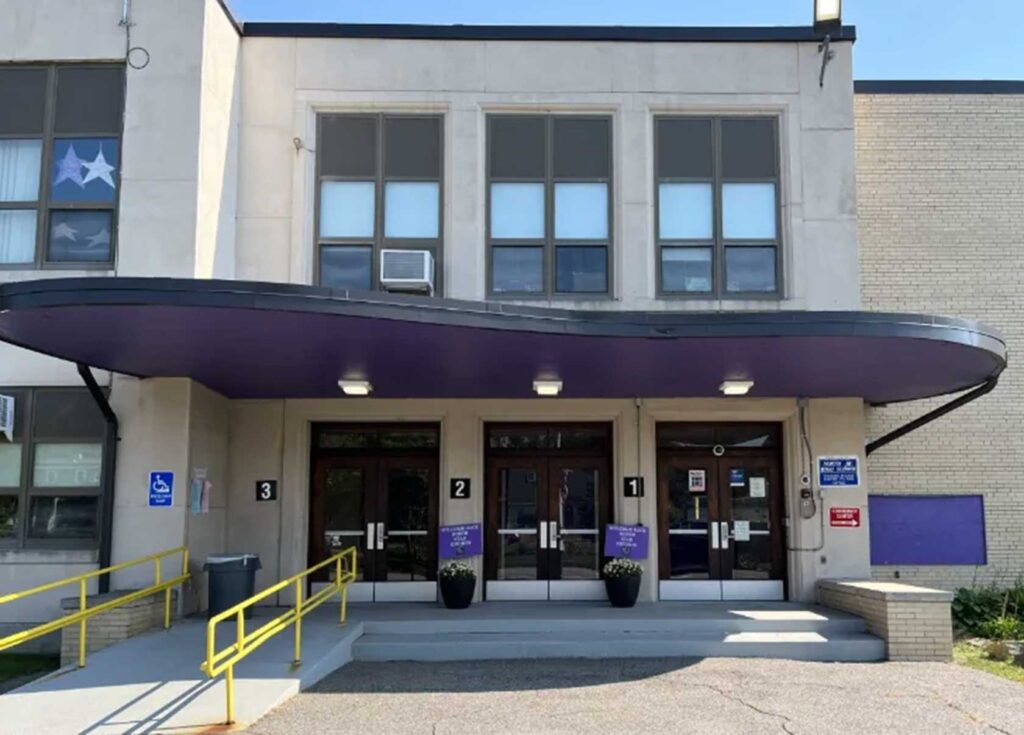Gateway school districts lack funding for English language learners as migrant population grows

For twenty years, the percentage of English language learners in Massachusetts’ public schools has been steadily climbing. Urban districts are accustomed to serving large immigrant populations.
But district leaders are appealing to Beacon Hill in the 11th hour for major assistance. Though negotiators are reconciling budgets passed by the House and Senate months ago, the educators cannot patiently wait in silence for another funding cycle.
Their districts are making cuts and trimming services at an inauspicious time. An influx of new arrivals has taken refuge in the Bay State. Fleeing turmoil, poverty or worse, their travel plans weren’t scheduled around an October 1 cutoff date used in the state’s school funding formula.
As always, public schools opened their doors to welcome migrants to Massachusetts.
“The demographics of Brockton are part of a larger international socio-political climate,” said Kellie Jones, Brockton’s director of bilingual education. With so many migrants displaced abroad, she said new students were arriving with trauma and socio-emotional needs.
Last school year, Brockton saw “the perhaps largest increase of multilingual learners to our district in my 25-[year] career,” she said. Recent enrollment outpaced 2010, when an earthquake struck the Haitian capital, Port-au-Prince.
Brockton Public Schools served 4,648 English language learners on October 1, 2023; 31% of the student population. Since then, 854 multilingual learners enrolled, Jones said, including 29 in the month of June alone. Brockton, she said, will not see any additional foundation aid for these students until “September of 2025.”
In the meantime, BPS classroom sizes are rising. One bilingual biology class at Brockton High School completed the year with 80 students for one teacher to educate. Brockton is expecting average class sizes of 30 or above at its elementary schools next year.
“The reality is that we’ve had very, very, very, very large class sizes that are not equitable across the state,” Jones said.
“We are obligated not just to support the students, but also their families,” Jones explained. Brockton also employs language acquisition coaches, skilled department heads to assist young teachers and family support staff.
A family communication center with bilingual community relations operates as “basically a call center and an electronic notification system,” she said. They help families find housing and food assistance, and with personal tasks like getting glasses.
Even routine communication requires translation, such as notifying parents of a skinned knee. The staff are certified interpreters that are called on during “in-person disciplinary meetings,” Jones said. “They are conduits.”
The district has “dedicated teachers and administrators who want to be with Brockton,” she said. At the same time, when tight budgets necessitate layoffs, less-senior teachers are quickly offered positions in other districts. Jones said Brockton would have “improved educational outcomes if we were able to keep educators” for training and development over 15 to 20 years.
In June, educators and civic leaders from Worcester, Chelsea and Haverhill emphasized the needs of English language learners as they called on Beacon Hill to mitigate inflation’s effects on their school budgets.
In January, Governor Healey set the inflation rate at 1.35% for most foundation budget categories, in accordance with the governing statute. But the Massachusetts Budget and Policy Center argues actual inflation was far higher. Accounting for the difference would require another $465 million in Chapter 70 aid this year.
Rachel Monárrez, Ed.D, of Worcester said her district is “currently facing a $22 million shortfall” in FY 25. “It’s the inflation rate,” she stated, also noting flat enrollment. Since 85% of Worcester’s budget goes to employee salaries, layoffs were a necessity.
Of Worcester’s 24,350 public school students, English is not the first language for 59%. 30% are currently English language learners, a designation that applies during a student’s first five years learning English or until they achieve proficiency.
Melissa Verdier of the Educational Association of Worcester contrasted the available funding for special educators with a lack for multilingual educators. She said it “makes a huge difference” in answering federal obligations. She suggested gateway cities have populations with unparalleled needs.
“We do not have the financial stability that we should have to run a district of this size,” she said.
Tom Graniman of the Haverhill School Committee praised Chapter 70 funding for counteracting “what would otherwise be a highly regressive system of funding” schools.
Created in 1993, Chapter 70 is the state law that provides $6.9 billion in annual school aid to public school districts. The law calculates an amount for each district using a two-sided formula that simultaneously ensures each district spends an adequate amount of local funds on education while also preventing any wealthier district from being solely responsible for funding local schools.
As the district’s per-pupil funding rose in recent years, they’ve hired ELL-specialists. But recently, “Haverhill has had to curtail services,” he said.
Haverhill serves 7,882 students, 13% of which are English language learners — nearly the state average. Haverhill enrolled 132 new ELLs between student censuses in 2022 and 2023.
Kathryn Anderson, president of the Chelsea Teachers Union, said her district has “a really high number of language learners and low-income students” who need extra personnel. “But for decades, our funding formula has meant that, instead, our students have fewer adults available to serve those higher needs.”
45.2% of Chelsea Public School students are English language learners, the highest proportion of any municipality in Massachusetts.
Piecemeal through FY 27, the Student Opportunity Act will raise the foundation budget associated with each English language learner. The largest increase will benefit districts with more ELLs in high school. The school districts mentioned herein receive between 62% and 83% of their foundation budget as Chapter 70 aid.
Inflation adjustments are another mechanism for the foundation aid increases over time. A minimum aid increment per pupil is the easiest route for additional Chapter 70 aid in FY 24. The House and Senate are negotiating between a $104 and $110 figure, respectively.
The minimum aid provision has been labeled “regressive” by the Massachusetts Business Alliance for Education. First introduced in the FY 13 budget, the minimum aid per pupil dollar amount has never before exceeded $60, which it reached in the last two state budgets.
Kellie Jones reserved her feedback on public policy for the October 1 enrollment census. Brockton could properly provide for public education only “if we were adequately funded for the students who enroll in our schools” mid-year, she said.
She wants kids to grow into “contributing members of society.” But “the system right now is not set up for that,” she argued. It “fundamentally provides one level of opportunities to some districts and a different level of opportunity in other districts.”






